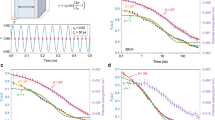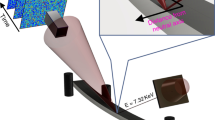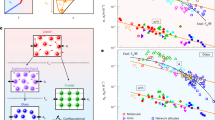Abstract
IT is well known that the relaxation of stress in glass during annealing does not follow the Maxwellian relaxation formula. Indeed, annealing schedules for glass are always based on Adams and Williamson‘s1empirical law that the reciprocal of the stress is proportional to the time. Littleton2 and Lillie3 have attempted to account for the discrepancy on the basis of the viscosity being a function of the time, and many workers have attributed it to the dependence of the stress relaxation on some ‘molecular viscosity' or upon changes in the equilibrium state of the glass.
This is a preview of subscription content, access via your institution
Access options
Subscribe to this journal
Receive 51 print issues and online access
$199.00 per year
only $3.90 per issue
Buy this article
- Purchase on Springer Link
- Instant access to full article PDF
Prices may be subject to local taxes which are calculated during checkout
Similar content being viewed by others
References
Adams, L. H., J. Franklin InsL, 216, 39 (1933).
Littleton, J. T., J. Amer. Ceram. Soc., 17, 43 (1934).
Lillie, H. R., J. Amer. Ceram. Soc., 16, 619 (1933).
Douglas, R. W., Nature, 159, 415 (1946).
Cox, S. M., and Kirby, P. L., Nature, 159, 162 (1947).
Morey, G. W., Ind. Eng. Chem., 27, 966 (1935).
Author information
Authors and Affiliations
Rights and permissions
About this article
Cite this article
COX, S. Annealing of Glass. Nature 161, 401–402 (1948). https://doi.org/10.1038/161401b0
Issue Date:
DOI: https://doi.org/10.1038/161401b0
This article is cited by
-
Annealing of Glass
Nature (1948)
Comments
By submitting a comment you agree to abide by our Terms and Community Guidelines. If you find something abusive or that does not comply with our terms or guidelines please flag it as inappropriate.



